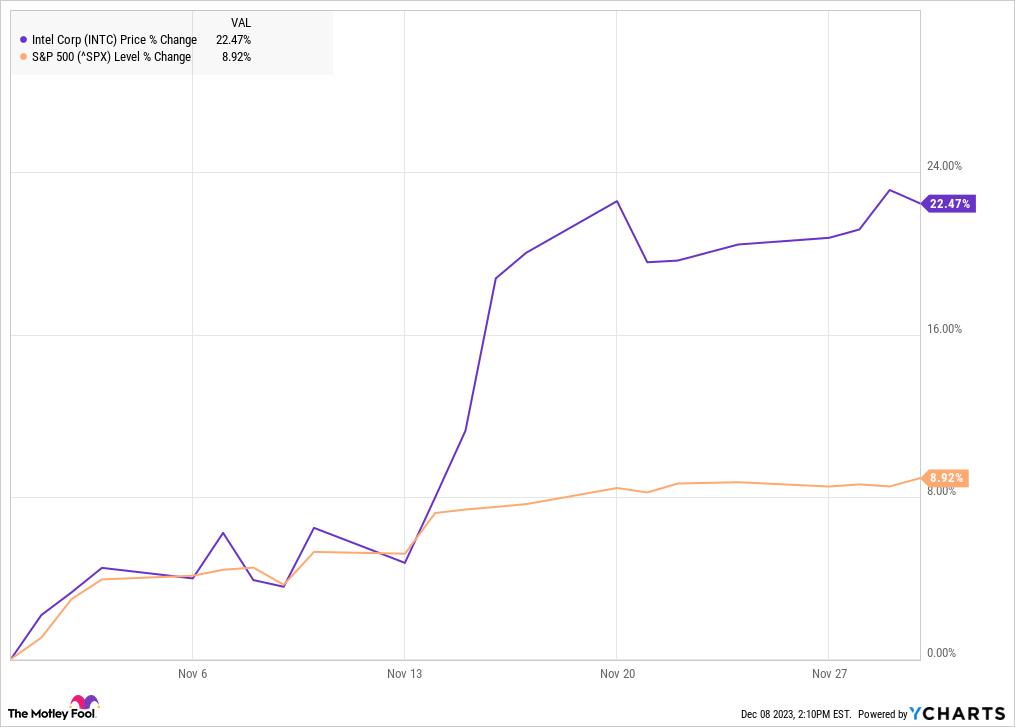Shares of Intel (INTC 1.30%), the chipmaker best known for powering PCs, were surging last month as macroeconomic news, a broader recovery in the stock market, and an analyst upgrade all pushed the chip stock higher.
There was little company-specific news out on Intel last month. However, the gains show that the stock could have substantial upside potential in an improving macro environment and with a better outlook for the semiconductor sector, which is starting to emerge from a downturn.
As a result of improving sentiment, Intel finished the month up 23%, according to data from S&P Global Market Intelligence. As you can see from the chart below, the stock trended with the S&P 500 for most of the month but surged in the middle of November on a weak inflation report and an analyst upgrade.
Intel builds momentum
Shares of Intel gained 13% over a three-day period in the middle of the month. First, the stock gained on a cooler-than-expected October consumer price index report, which boosted expectations that the Federal Reserve was done raising interest rates, which would be good news for Intel.
As a chipmaker, the company operates in a highly cyclical business and is dependent on business and consumer spending for PCs and other products. Higher interest rates are designed to slow business expansion, which would advocate squeeze Intel. Intel also carries a debt burden of nearly $50 billion, and lower rates would bring down variable-rate debt payments and, potentially, allow it to refinance its debt.
Two days later, the stock surged another 7% after Mizuho upgraded the stock to buy, citing a promising pipeline of new server product launches and foundry customer announcements coming up. Analyst Vijay Rakesh raised the price target on Intel from $37 to $50.
The stock pulled back the following week after a court ruling could jeopardize billions of dollars in subsidies. However, the stock finished the rest of the month on a strong note.
The chip stock fades in December
The chipmaker hasn’t maintained that momentum into December, as the stock is down nearly 4% through Dec. 8. A report in The Wall Street Journal detailed a number of challenges facing the chip stock heading into 2024, including declining PC demand and Windows’ upcoming shift to the cloud, which would favor other chipmakers. Macro-related gains can often be easy come, easy go. Intel will need to deliver fundamental improvements to continue moving higher.
Jeremy Bowman has no position in any of the stocks mentioned. The Motley Fool recommends Intel and recommends the following options: long January 2023 $57.50 calls on Intel, long January 2025 $45 calls on Intel, and short February 2024 $47 calls on Intel. The Motley Fool has a disclosure policy.




